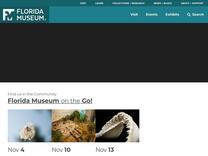Yellowtail Snapper – Discover Fishes https://www.floridamuseum.ufl.edu/discover-fish/species-profiles/yellowtail-snapper/
Ocyurus chrysurus This common snapper prefers schooling in small groups in and around reefs in the Western Atlantic. It has a distinct yellow lateral line that starts off narrow near the eye and widens as it reaches the forked, yellow caudal fin. It has blue-ish or olive sides with yellow spots a
Juveniles, living primarily among seagrasses, feed on plankton.

